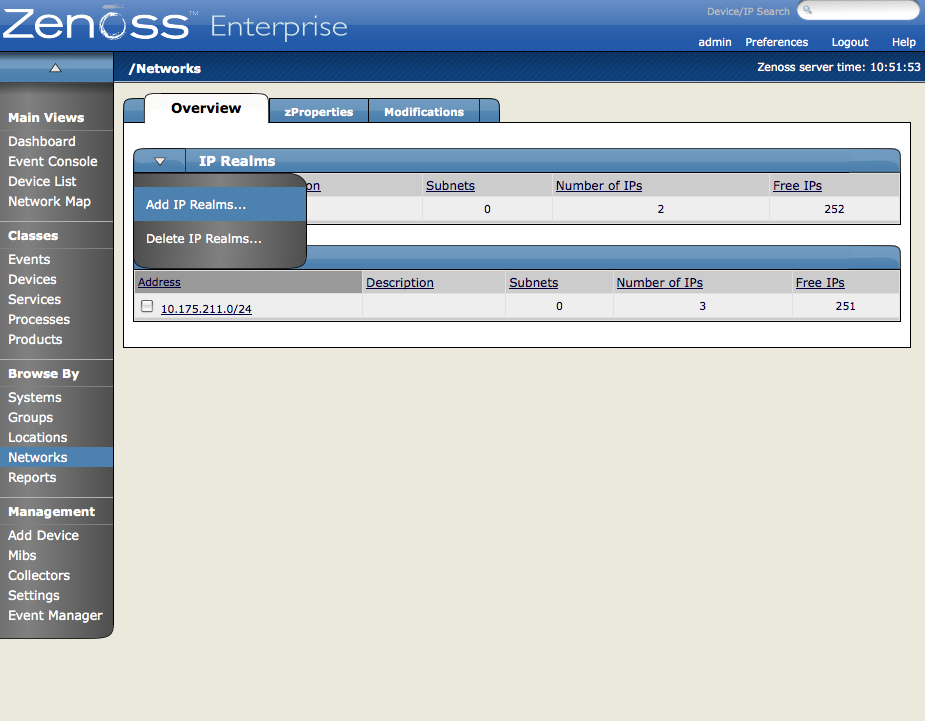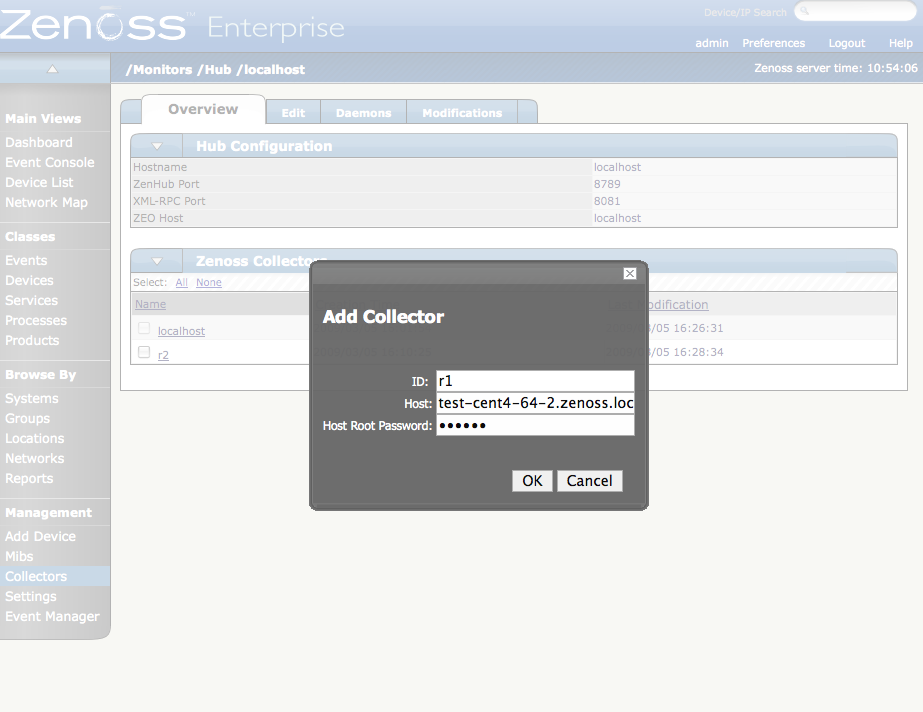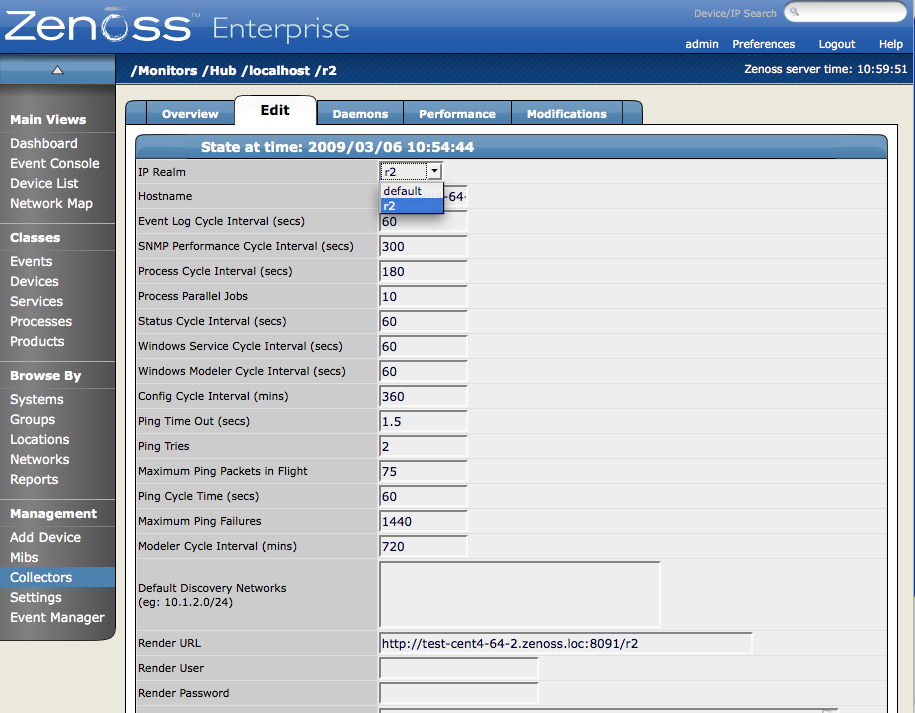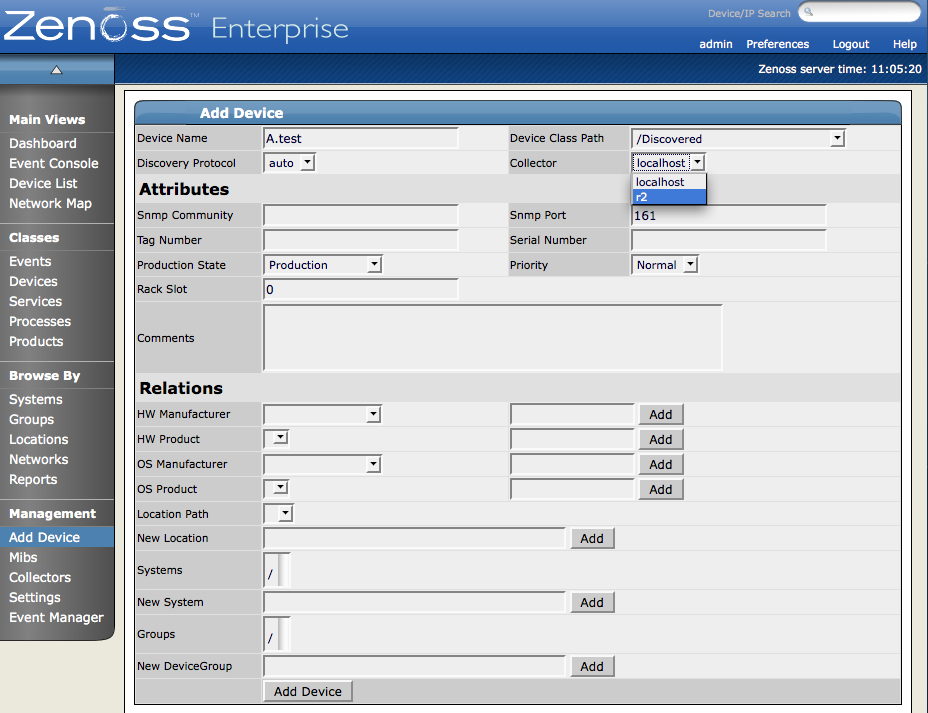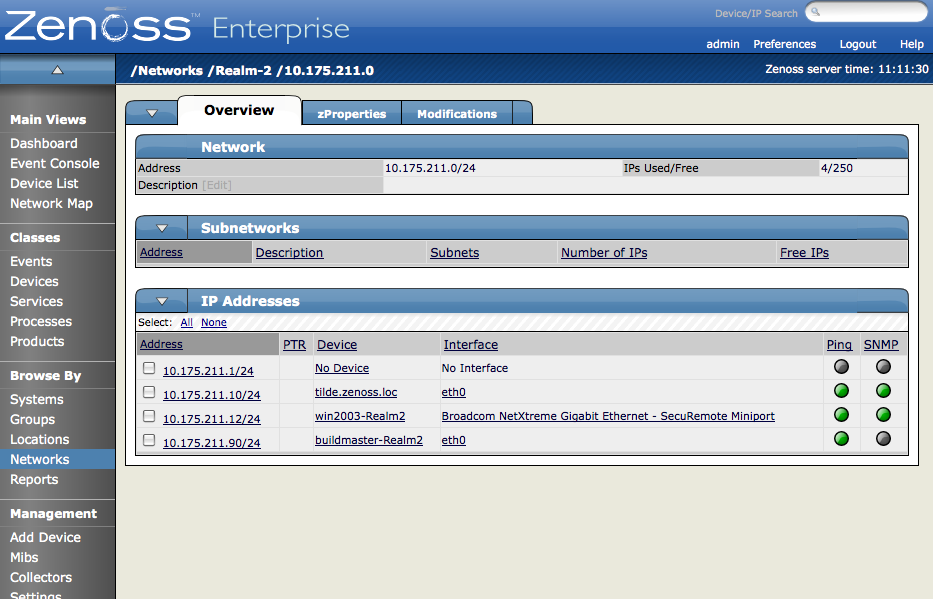Let's setup Zenoss following the example system described above.
Tip
If you don't have overlapping IP space this example can be created using collectors within the same network. To create the example, add a machine multiple times once per collector, making sure to change the name of the device as it is added. The result is similar to a real realm setup.
Under multi-realm IP networks, device names must be unique even though the IP addresses will overlap.
Now add the two collectors that are installed in each realm.
Distributed collectors now have an IP Realm field on their configuration screen set each collector to the appropriate realm that we configured above.
Change each collector so that it is in the correct realm.
Now we are ready to add devices to the system. As mentioned above, adding the same device to the system twice can simulate a multi-realm setup. Add a device called
A.testmaking sure that when it is added the collector is set to one of the remote collectors, and notlocalhost.Now rename the device.
Add the device a second time using your other collector, again not
localhost.After the device is loaded navigate to the OS tab and follow the network link on one of the interfaces. Notice that the network has been created underneath the realm created earlier. This configuration is at the heart of multi-realm, as networks are discovered they are created within each realm.
Monitoring is now happening on each representation of the device from the different collectors in different overlapping realms.
As another test try searching by IP from the top-level search. Two devices will be returned -- one within each realm.

